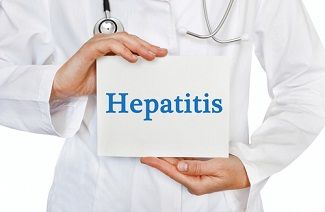Hepatitis B Infections Drop in Asia Pacific Region, but Deaths from HBV and HCV Rise
Incidence of hepatitis B has fallen in the Asia and Pacific region, but progress against hepatitis C in the region has lagged and morbidity and mortality continued to rise, underscoring a need to improve diagnosis and linkage of care, according to a recent report.

Countries in Asia and the Pacific region need to ramp up political will and financial support of national action plans to meet goals for eliminating hepatitis B and C by 2030, according to a new report.
The study, published in Liver International,provided an update on progress toward meeting Global Health Sector Strategy (GHSS) goals for eliminating viral hepatitis by 2030 by modeling disease burden and constructing the cascade of care.
It showed the region to be on track for reducing HBV new infections and slower to reduce HCV incidence, while marking a rise in deaths from both and falling short of testing and treatment targets.
“The region as a whole has done an excellent job in reducing the incidence of hepatitis B through robust vaccination programs,” Devin Razavi-Shearer, HBV/HDV project lead at the Center for Disease Analysis Foundation, and co-authors told Contagion. “However, the incidence of hepatitis C as well as the morbidity and mortality related to hepatitis B and C have continued to increase as other prevention measures, diagnosis, and treatment remains low. We must build on the continued success of the HBV vaccination program to ensure that impact of viral hepatitis for HBV and HCV can be effectively mitigated.”
Between 2015 and 2020, the region saw a 30% decline in HBV incidence, putting it on pace to meet GHSS goals. Incidence of HCV, however, fell by only 6%. Chronic HBV prevalence declined from 4.69% to 4.30%, and chronic HCV prevalence declined from 0.64% to 0.58%.
Incidence of hepatocellular carcinoma increased by 9% for HBV and 7% for HCV, and liver-related deaths increased by 8% for HBV and plateaued for HCV.
Only 13% of chronic HBV infections were diagnosed and 25% were treated, while diagnoses and treatment rates for HCV were 21% and 11% respectively.
“The Asia Pacific Region carries 55% of the global viral hepatitis burden and in many countries there is relatively good education and awareness,” Razavi-Shearer and co-authors said. “While governments have prioritized vaccination to combat hepatitis B, neither this nor the education and awareness has led to higher diagnosis rates.Many countries have yet to reap the benefits of birth dose of hep B vaccine, which needs to be scaled up.”
The region includes 11 World Health Organization member states in Southeast Asia and 37 in the Western Pacific who endorsed regional action plans for eliminating hepatitis. Worldwide, chronic HPV affected an estimated 296 million people and HCV affected an estimated 58 million people in 2019.
Universal infant vaccination against HBV began in the 1990s in the region and is credited for the drop in HBV incidence. The report noted that the region continues to see almost half a million HCV incident cases annually.
“There is a large need to prioritize the screening of hepatitis B and hepatitis C as diagnosis remains stubbornly low,” Razavi-Shearer and co-authors said. “Through the increase in diagnosis, a subsequent increase in linkage of care would be necessary to ensure that we can slow if not stop these preventable deaths. Although often different by country, many of the treatment guidelines are difficult for primary health care providers to implement. In order to effectively meet the challenge of viral hepatitis it is imperative thatprimary health care providers play a major role. Simplification of service delivery and optimal integrated utilization of existing POC NAT testing facilities must be focused on if elimination is to succeed.”
Interventions to reduce hepatitis transmission have varied, with the focus being primarily on blood transfusion, medical injection and injection drug use. The authors called for scaling up of harm reduction measures, including providing sterile needs and syringes to people who inject drugs along with increasing opioid substitution therapy.
Early detection and treatment also is needed to reduce negative outcomes. The report estimated 87% of those with chronic HBV and 79% with HCV remain undiagnosed, possibly due to high diagnostic costs.
Efforts are underway to revise treatment eligibility guidelines. Under current standards 12-25% of people with chronic HBV are eligible for treatment.
“In countries with elimination plans, they must commit resources necessary to implement these plans fully and effectively,” Razavi-Shearer and co-authors said. “For those without, they have only 9 years to compose, fund and implement a viral hepatitis elimination plan. Every day that this process is delayed there are preventable infections and deaths occurring. Investing in hepatitis elimination is cost effective and will help to reduce liver cancer, which is costlier for all. This calls for advocacy for high levels of political commitment. We must work together, across sectors, disciplines, with communities and countries, to ensure that we are able to minimize these harms on our peoples and build a future free of viral hepatitis for the next generations.”
